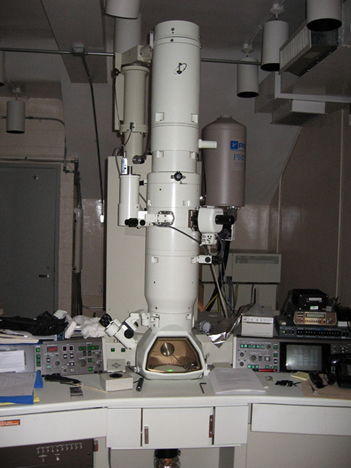

|
Transmission Electron Microscopy |
|
Brooklyn College has the JEOL-2010 transmission electron microscope (TEM) that can perform high resolution lattice imaging for solid materials and thin films. The instrument can typically be used to image metals, ceramics, semiconductors, minerals, nanostructured materials, and biological-related materials and tissues at atomic-bond-length resolution. Researchers can use this instrument heavily for work related to spintronics, environmental issues, geophysics and geochemical research, atmospheric research, biological research, and catalysis. This instrument provides analytical 200 kV TEM capability for detecting elements ranging from carbon to thorium. A combination of elemental (EDS) and diffraction (CBED) information provides unambiguous data on the structure and chemistry of the material under investigation. It is capable of a wide range of illumination lens conditions: TEM mode for Bright Field (BF) and Dark Field (DF) imaging and phase contrast imaging; energy dispersive spectroscopy (EDS) mode for both point & chemistry mapping; Atomic |
